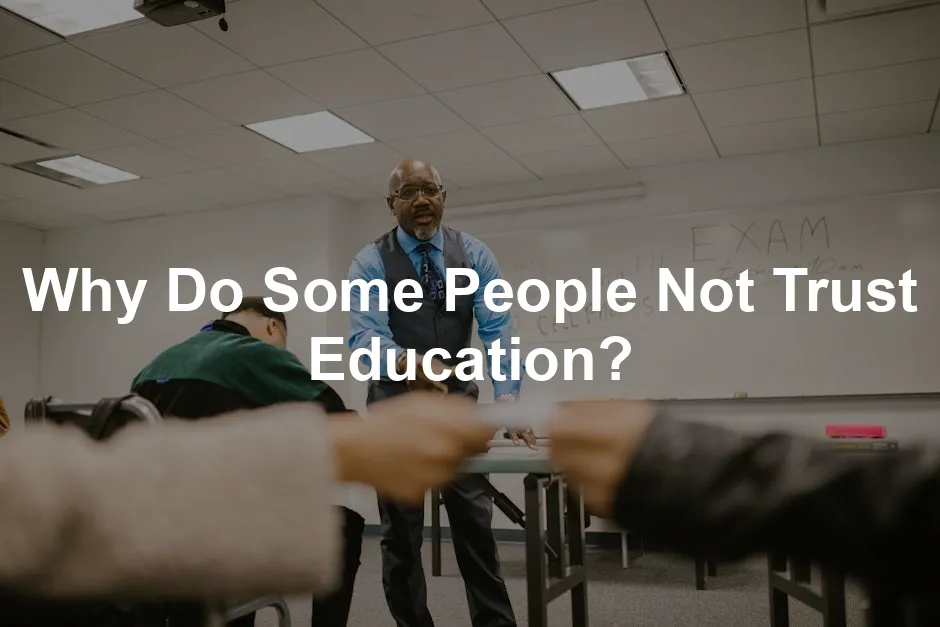
Why Do Some People Not Trust Education?
Understanding Trust in Education
The Value of Trust in Educational Systems
Trust forms the backbone of effective education. When students trust their teachers, they engage more fully in the learning process. This trust fosters an environment where students feel safe to express themselves and ask questions. Teachers who are trusted can inspire and motivate their students, leading to better academic performance. Without trust, students may disengage, affecting their overall success. Furthermore, strong teacher-student relationships built on trust can enhance the educational experience, making it more enjoyable and productive.
If you’re looking for a practical guide to improve your classroom management and build that essential trust, check out “Teaching with Love and Logic: Taking Control of the Classroom” by Jim Fay. It provides strategies that can help create a more trusting environment for both teachers and students.
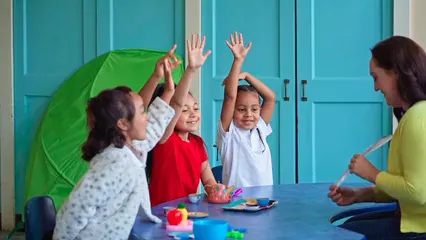
The Consequences of Mistrust in Education
Mistrust in education can lead to serious consequences for students. When students lack trust in their educational environment, their performance often suffers. They may feel isolated, leading to decreased motivation and lower grades. This mistrust can also affect parental involvement; parents who distrust schools are less likely to engage in their children’s education. Over time, this mistrust can create long-term societal implications. Communities may struggle to achieve educational equity, perpetuating cycles of disadvantage. Building trust is essential for nurturing resilient educational systems that benefit everyone involved.
Historical Context of Education and Trust
Evolution of Educational Systems
Education has transformed significantly over centuries. Initially, learning was informal, often occurring within families or communities. Knowledge was passed down orally, focusing on practical skills. As societies evolved, formal education emerged. This shift introduced structured curricula and institutional oversight. Over time, educational systems became widespread, catering to larger populations.
Societal perceptions of education have changed. In earlier times, education was a privilege for the elite. Now, it is viewed as a fundamental right. However, this evolution isn’t without misgivings. Historical instances show that education systems have often favored certain groups. These biases can lead to feelings of alienation among others. For example, in some communities, educational institutions were seen as oppressive rather than enlightening. Such sentiments have contributed to a lingering mistrust in education today.

Case Studies of Educational Mistrust
Several regions reflect significant educational mistrust. In the United States, the aftermath of the civil rights movement revealed deep divides in educational access. Many marginalized communities felt that schools perpetuated inequality. Similarly, in parts of Eastern Europe, historical upheavals led to skepticism about the motives behind educational reforms.
In South Africa, the legacy of apartheid left a fractured education system. Many communities remain distrustful of institutions that once excluded them. These historical events have lasting impacts on current perceptions of education. They illustrate how past injustices shape present-day attitudes. Understanding these case studies is essential. They remind us that trust in education must be consistently earned and maintained.
Political Influence on Education
Political agendas heavily impact educational policies. When governments prioritize certain values, these often reflect in curricula and funding decisions. This leads to perceptions of bias, as educational content may align with specific political ideologies. Many see education as a battleground for political influence, making trust in these institutions precarious.
Public perception of education has shifted to view it as a politically charged issue. Recent events, like debates over curriculum content related to social justice or history, highlight this trend. These discussions often polarize communities, further eroding trust. Parents and educators may feel caught in the crossfire of conflicting political views.
Moreover, recent political events, such as elections and policy changes, have exacerbated these tensions. For instance, the COVID-19 pandemic led to contentious discussions about school closures and remote learning policies. These events have left many questioning the motives behind educational decisions, deepening mistrust in the system.

Misinformation and Trust
Misinformation plays a significant role in shaping public perception of education. False narratives about educational practices can create unnecessary fear and skepticism. This is especially true when sensational stories circulate, distorting the reality of classroom experiences.
Social media amplifies these myths, making it easy for misinformation to spread. Parents and community members may encounter misleading information about school curricula, teacher qualifications, and educational outcomes. This can lead to a general distrust of educational institutions.
To counter this misinformation, transparency is crucial. Schools can share accurate information directly with families through newsletters or community forums. Educators should also engage with parents, addressing concerns and clarifying misconceptions. Promoting media literacy can empower individuals to discern credible sources from unreliable ones.
If you’re interested in understanding the psychological aspects of success and how mindset can influence educational outcomes, consider reading “Mindset: The New Psychology of Success” by Carol S. Dweck. It sheds light on how having a growth mindset can enhance learning and trust in the educational process.

Economic Factors and Inequality
Economic disparities significantly affect access to quality education. Families from lower-income backgrounds often face obstacles, such as underfunded schools and lack of resources. This inequity fosters a sense of distrust toward educational systems. Many believe that the education system favors those with financial means.
Socioeconomic status directly correlates with perceptions of education. Individuals from wealthier backgrounds may feel more confident in their educational experiences. In contrast, those from disadvantaged communities often view education as a barrier rather than a bridge to opportunity.
The impact of student debt and rising education costs cannot be ignored. Many young adults question the value of their degrees when faced with mounting debt. This skepticism leads to a broader distrust in educational institutions that seem more focused on profit than student success. Addressing these economic factors is essential for rebuilding trust in the education system.

Standardized Testing and Its Impact
Standardized testing is a cornerstone of modern education systems. These assessments aim to measure student performance and educational effectiveness. However, they are often criticized for their limitations. Many argue that these tests do not accurately reflect a student’s true intelligence or potential.
Critics claim that standardized testing promotes a narrow view of learning. Students may feel pressured to memorize facts rather than develop critical thinking skills. This pressure can contribute to a broader distrust of educational institutions. When students associate education with high-stakes testing, they may disengage from the learning process.
Moreover, the focus on testing can lead to “teaching to the test.” Educators might prioritize test preparation over deeper learning experiences. This approach can alienate students and create a perception that education is merely about scores rather than genuine understanding. Addressing these concerns around standardized testing is vital for restoring trust in education.
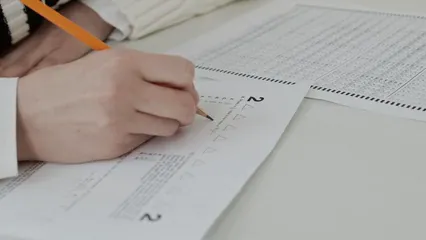
The Role of Technology in Education
Technology has transformed education dramatically. Online learning offers flexibility and access to resources. However, not everyone trusts these digital platforms. Many question their effectiveness and the quality of education they provide. Can a screen truly replace a classroom experience? This concern looms large.
Critics argue that online learning lacks personal interaction. Face-to-face communication with teachers fosters trust and engagement. In contrast, virtual environments can feel impersonal. Students may struggle to connect with their instructors, leading to feelings of isolation. This detachment can breed skepticism about the educational value of online programs.

Teacher-Student Relationships
Positive teacher-student relationships are crucial for trust. When students feel supported, they are more likely to engage. A caring teacher can inspire and motivate, making learning enjoyable. Yet, indifference or bias from educators can have the opposite effect. Students may feel alienated, leading to distrust in the educational system.
Teachers play a vital role in shaping students’ experiences. When they show empathy and understanding, students thrive. However, if teachers appear indifferent or biased, students may withdraw. This disengagement can foster a belief that education is more about control than growth.
To build better relationships, educators should prioritize communication. Regular check-ins can help students feel valued. Creating an inclusive classroom environment encourages openness. These strategies can strengthen trust and enhance the overall educational experience.

Exploring Non-Traditional Education Models
Alternative education systems have gained popularity in recent years. Models like homeschooling and Montessori emphasize personalized learning. Many families are drawn to these options for their flexibility and focus on individual growth. They offer a contrast to conventional education, which can feel rigid and impersonal.
Success stories abound in alternative education. Students often thrive in environments tailored to their unique needs. However, these methods are not without challenges. Critics argue that they may lack the structure and resources of traditional schools. This can create disparities in educational outcomes.

Strategies for Rebuilding Trust
Rebuilding trust in education requires concerted efforts. Educators and policymakers must prioritize transparency. Open communication about curricula and policies can foster a sense of inclusion. Engaging with parents and communities is essential. When families feel heard, they are more likely to trust educational institutions.
Inclusivity also plays a significant role. Schools should reflect the diverse backgrounds of their students. This representation can help bridge gaps and address concerns. Additionally, community engagement initiatives can strengthen ties between schools and families. Collaborative efforts can restore faith in the education system.
Ultimately, trust can be rebuilt through consistent actions. By prioritizing transparency and inclusivity, schools can foster a more trusting environment. This commitment can lead to improved educational experiences for all students.
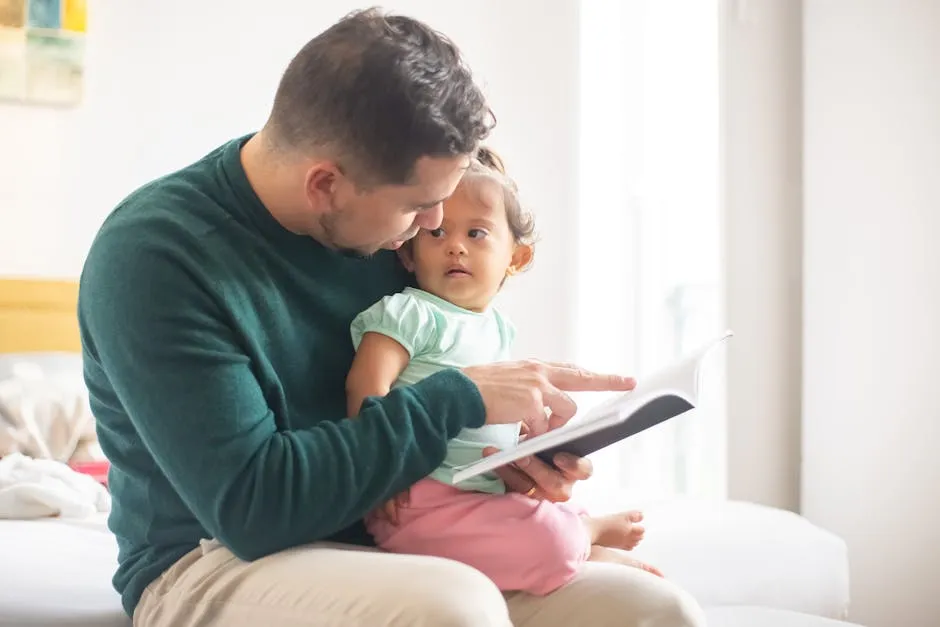
Conclusion
Trust in education is vital for personal success and societal unity. When individuals believe in educational institutions, they are more likely to engage fully. This trust creates a supportive atmosphere where students can thrive. However, many factors contribute to a lack of trust. Personal experiences, political agendas, and economic disparities all play a role.
If you’re looking for a great read that dives deep into personal growth and habits, don’t miss “Atomic Habits” by James Clear. This book can help you understand how small changes can lead to significant improvements in your life and education.
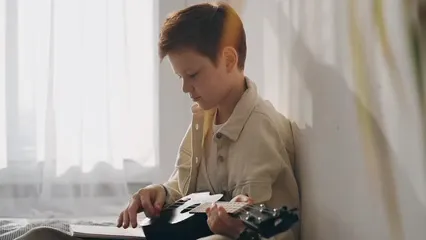
By addressing these complex issues, stakeholders can rebuild confidence in educational systems. It’s essential to implement changes that promote fairness and transparency. This approach ensures all students have access to quality learning experiences. A trustworthy educational landscape benefits everyone, leading to a more informed and equitable society.
Frequently Asked Questions (FAQs)
Why do some people not trust education?
Personal experiences, political influence, and economic inequality are key reasons.
How does political influence affect trust in education?
Political agendas can shape curricula, leading to perceptions of bias.
Is the cost of education a factor in mistrust?
Yes, rising costs, especially in higher education, contribute to skepticism.
Do standardized tests affect trust in education?
Absolutely. They are often seen as prioritizing memorization over real learning.
Why do alternative education systems gain trust?
They offer personalized learning and flexibility, contrasting with traditional rigidity.
Can reforms restore trust in education?
Reforms focusing on inclusivity and transparency could help rebuild trust.
Please let us know what you think about our content by leaving a comment down below!
Thank you for reading till here 🙂
All images from Pexels




